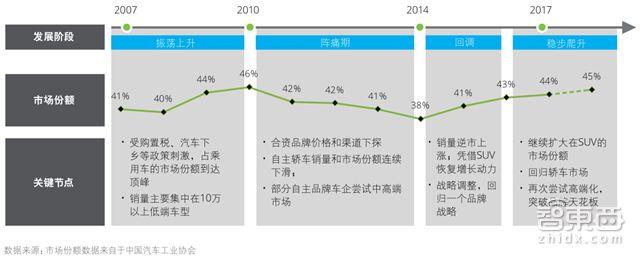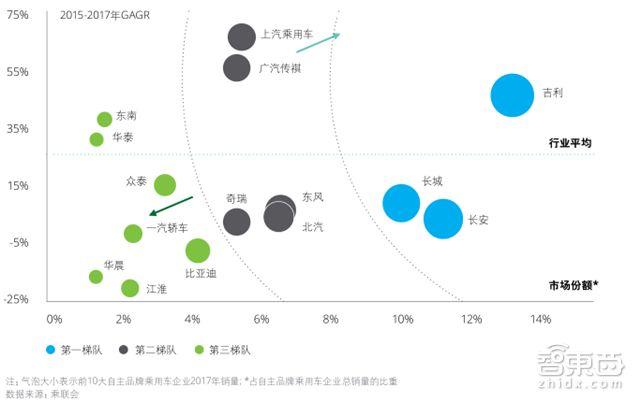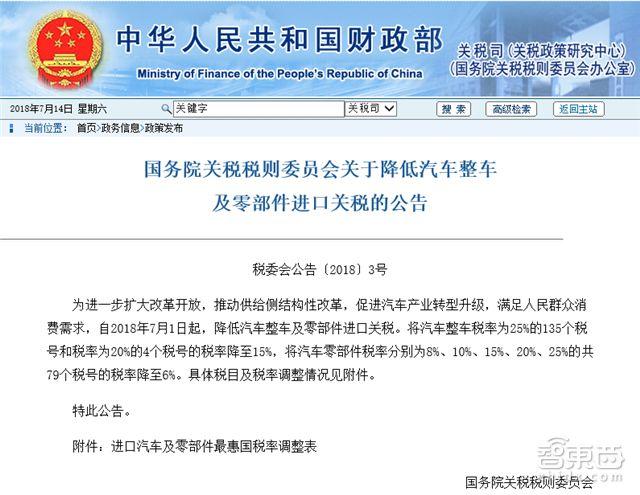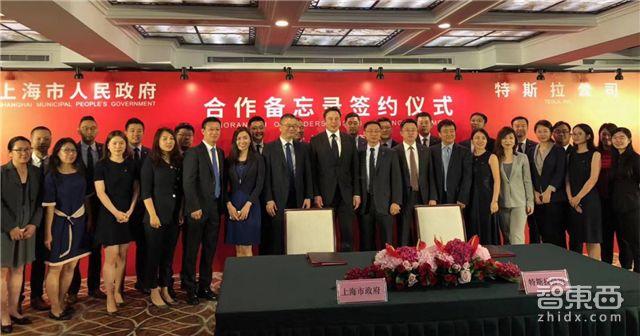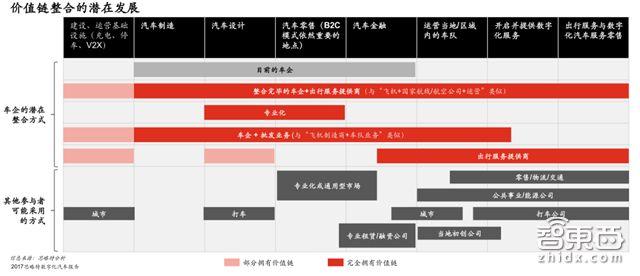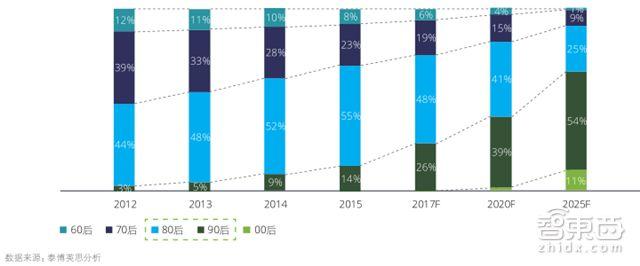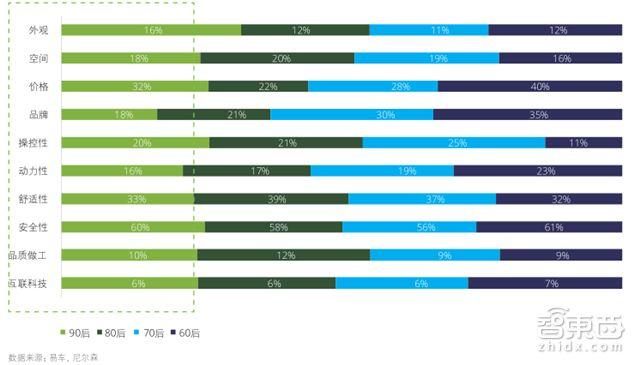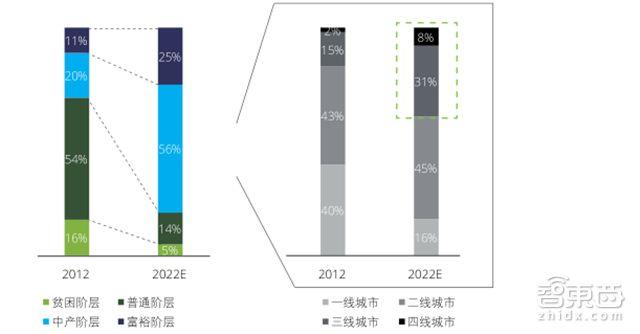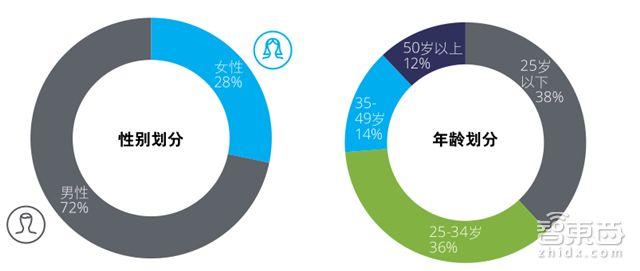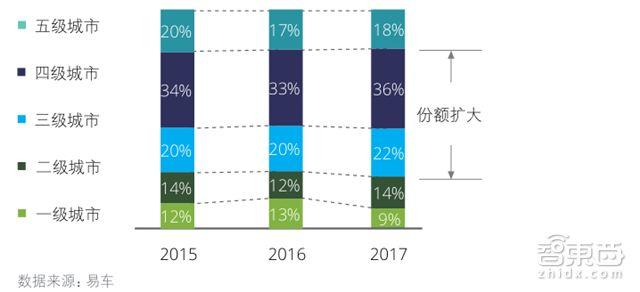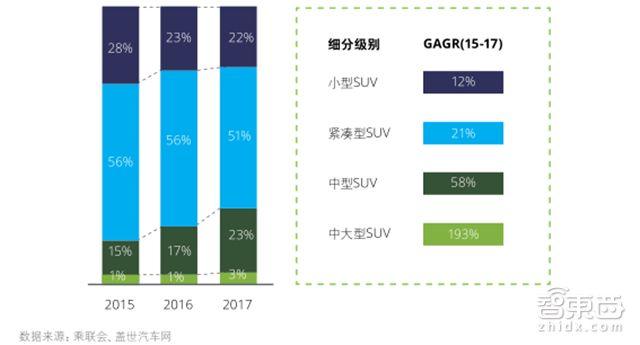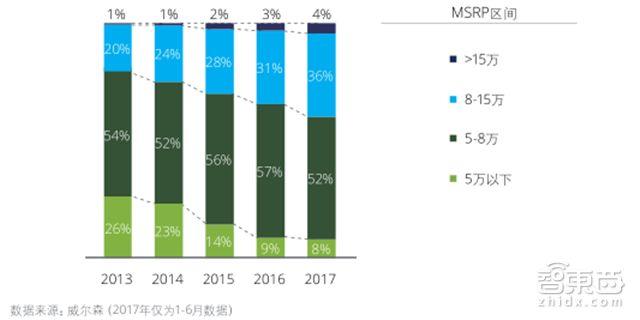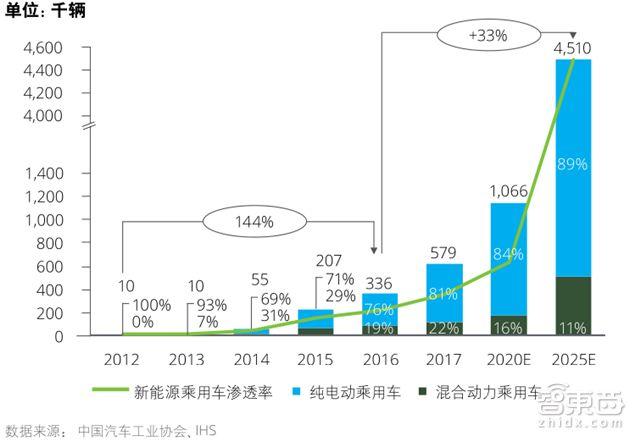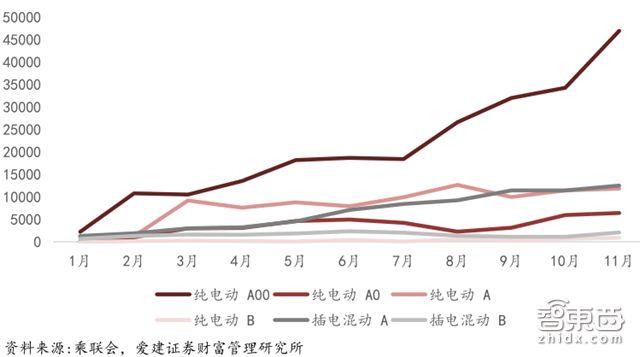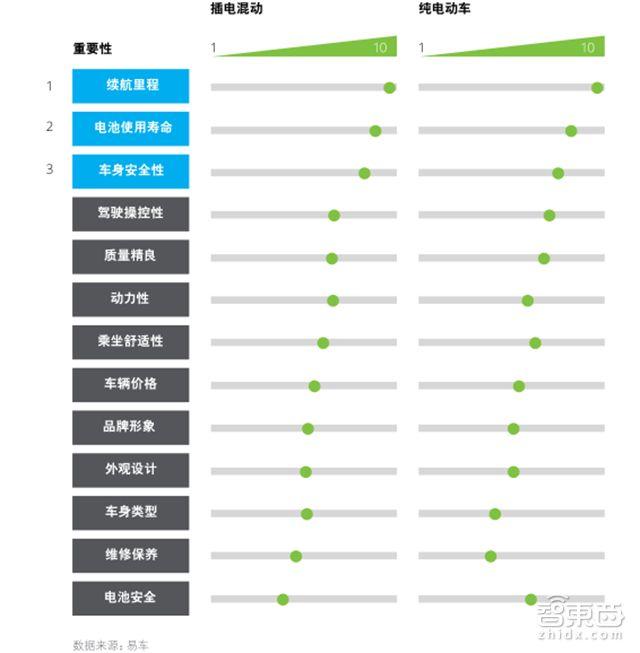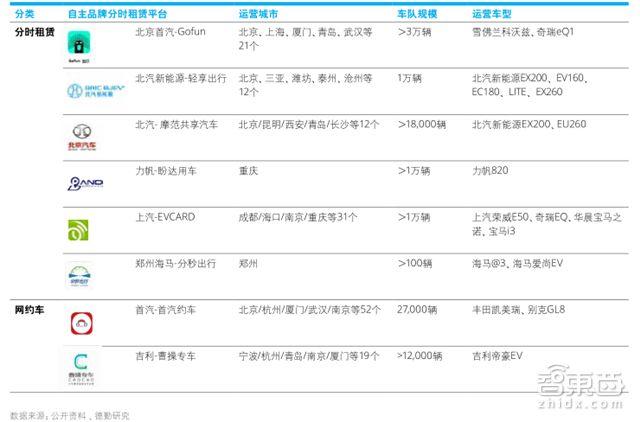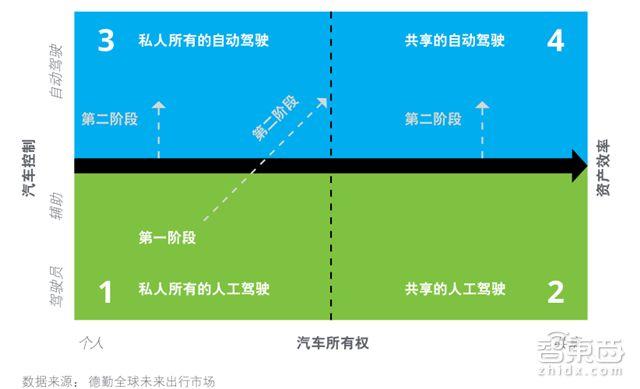Self-owned brand car enterprise crisis: after losing the policy umbrella, it will face the final elimination
The development process of China's auto brands for more than 30 years, from closed doors to joint ventures, to private rises, is gradually opening up. With the approval of the State Council, since July 1, 2018, the import tariffs on complete vehicles and parts will be reduced. The decline in the price of imported cars will definitely threaten joint ventures and independent brands at the same level. China's self-owned brand cars started by “joint venture†have reached a turning point in maturity: in addition to the fierce competition brought about by the opening of policies, they will also face technological changes and the restructuring of the discourse power of the industry chain, and the impact of emerging travel modes on traditional business models. and many more. In this issue of intelligent internal reference, we recommend the 2018 China self-owned brand automotive white paper from Deloitte, taking stock of the automotive industry revolution and China's “post-joint venture†era, the danger of independent brands. The following are the dry goods presented by the smart internal reference: Growth in the greenhouse â–²The important node of independent brand development in the past ten years After China's accession to the WTO in 2000, China officially opened up the automobile market. After that, the decision-making layer raised the independent innovation of the automobile industry to the height of national policies, including the state-owned and private independent brands such as Chery, Chang'an, Geely and Great Wall. Start entering the fast rising channel. In 2010, independent brand car companies ushered in the highest point of their development under the stimulus of the automobile to the countryside and the halving of purchase tax, and the market share reached an unprecedented 45.6%. However, behind the sales figures, the strength of independent brands in the joint venture brand is very different, no matter in the product development, process level, or quality control, there is still a big gap, and the price range is concentrated below 80,000 yuan, brand recognition Degree and brand premium ability is low. After that, the self-owned car companies fell into a four-year downturn until 2014, with its market insight, accurately capture the emerging needs of SUVs, and quickly fill the market with responsiveness to regain lost ground. If you only focus on 2010-2017, this is the most ups and downs of independent brand development. From the previous experience of sales decline, to the mid-to-high-end market, to the last two years, with a series of design excellence, quality control and performance can Compared with the joint venture brand's fist products, it steadily expanded its leading position in SUV, and even some brands successfully broke through the ceiling of 150,000 yuan. In recent years, the comprehensive competitiveness of self-owned brand car companies has been comprehensively improved, not only reflected in the increase in sales volume and market share, but also in the upward shift of the price center. More importantly, in R&D investment, design, and consumer demand. The breakthroughs, platform construction, product experience and marketing innovation have made great breakthroughs. Some car companies are turning the business model changes brought by emerging technologies and mobile travel into competitive advantages. alarm! â–² internal ladder division of independent brands In 2018, independent brand manufacturers showed unprecedented anxiety, both from the operational pressures brought about by the rapidly changing external market environment, and from the dynamics of change in the development of the enterprise itself. Policy level: evacuation of the greenhouse to raise the threshold The automobile industry policy environment has ushered in a major update, and its main sign is to expand opening up and raise the threshold for industrial investment. Since then, the external competitive environment will become more complicated, and the transformation of policies, technological changes and consumption patterns will become the main driving force for guiding industrial development. On the one hand, the 30-year-old foreign-investment-to-restriction policy will enter a countdown, and China will gradually liberalize its sub-sectors until the 2020 foreign investment restrictions are lifted. This timetable is much earlier than the market expects, although most foreign automakers said they will continue to maintain cooperative relations with existing Chinese partners, and a few even announced additional investment plans, but seeking the greatest interests in China is still the core of foreign automakers. The appeal. The liberalization of the stock ratio and the number of joint ventures means that the Chinese auto market will enter a state of full competition, which means a more equitable market environment for private enterprises that have long appealed to the market, but a state-owned car company that relies on joint venture profits. In the case of a foreign automaker's increase or increase to a controlling position, the most direct impact is the shrinking of the profits of Chinese listed companies; and a further blow is the foreign contraction of technology transfer, the joint venture factory overhead, only responsible for OEM production. â–²Tesla signed a pure electric vehicle project investment agreement with the Shanghai government, plans to open a factory in Shanghai, with an estimated annual production of 500,000 electric vehicles Another change comes from the "Regulations on Investment Management of the Automobile Industry", which is still in the stage of the draft opinion (for details, refer to the 256th issue of intellectual and internal reference), and the sub-fields impose strict requirements on the entry threshold, investment conditions and exit mechanism of industrial investment. Including the prohibition of new fuel vehicle companies, and improving the investment access of pure electric vehicles, it shows that China's auto industry has changed from a bigger to a stronger one. This regulation is expected to replace the 2004 version of the auto industry development policy that has been implemented for 14 years. At the level of industrial policy rules, subsidies for new energy vehicles have fallen sharply, and local subsidies have been adjusted. At the same time, the market officially entered the double-point evaluation stage (although new energy points began to be scored from 2019), batteries for new energy vehicles Both technical and cost control raise higher requirements. Market layer: incremental decline technology model leads to double challenge After the policy stimulus and experiencing a cycle high, the Chinese auto market is gradually entering a period of steady low growth in a longer period. Market increments are overdrawn by policies, so competition among manufacturers is more intense, and product cycle mismatches and strategic mistakes may cause car companies to fall out of the competition queue. In recent years, the increase in the market share of independent brands has benefited a lot from its faster decision-making mechanism and product launch speed. With the opening of the product cycle in several major joint venture brands in 2018, the advantages of independent brands will not be stabilized. . In other words, the self-owned brand will open the last elimination system, the organization mode is more flexible, the capital advantage is greater, the private enterprises benefit from the previous enterprise strategic adjustment and technology investment, and further expand the leading edge; the integration between large state-owned car companies will Speed ​​up, and extend from non-critical areas to key areas, from personnel adjustment to technology and system integration. â–² PricewaterhouseCoopers Strategy - Potential development of new travel value chain integration: It is expected that the digital travel service market will reach 2.2 trillion US dollars in 2030, but the existing automobile manufacturers will halve the industry profits. In addition, changes in consumer travel habits, the promotion of industrial technology with autopilot as the core, and the penetration of travel platforms into the auto industry have, to a certain extent, prompted continuous reforms within the self-owned brands to adapt to the new competitive environment. The most notable is the increasing number of mobile travel service platforms, from the downstream of the automobile industry chain to the upstream R&D and production links. For example, Didi has successively signed purchase agreements with a number of domestic auto brands, and the latter will provide them with a network. About vehicles and time-shared platforms for vehicles. Although automakers have a clear understanding of the traditional business model of shared travel, most of their own brands are still vacillating in response to changes in the travel market. They are as drastically transforming corporate positioning as foreign automakers such as Toyota and Ford, or continue to maintain Watching posture. However, from the feedback of enterprise research, how to make the big fuel vehicle market and seize the structural opportunities of consumption is still the most concerned and most difficult problem for auto brands. Decisive victory Deloitte began with the development of passenger cars, and combined with the development stage of its own brand, the consumer groups already covered, the competitive advantages and characteristics in each market segment, tried to sort out the next five years for independent brand vehicles. The growth logic of China's auto market, and how companies should take advantage of their existing resources, turn the changes into opportunities. Market Overview: Consumer Preferences and Economic Environment â–² China passenger car sales forecast (2020-2027) From the perspective of car ownership, the Chinese auto market is in a transitional phase from the late stage of the popularization period to the maturity stage. As of the end of 2017, China's 1,000-person car ownership is about 150, which is still a big gap compared to the mature car market. Deloitte expects that by 2020 China's passenger car sales are expected to reach 28 million, and in 2027 it will exceed 35 million, with an average annual compound growth rate slowing to around 4%. â–² age distribution of new car buyers in China According to the structure of the crowd, the post-80s and post-90s are the backbone of the current automotive consumer market. In the first half of 2017, the post-80s is the main consumer of the current auto market, accounting for 48% of the total. After 90%, although the proportion of consumers is less than 30%, the growth rate is eye-catching; by 2025, the post-90s will replace China after 80. The main force of automobile consumption. â–²Car ownership preferences of different age groups After 90s, the consumption concept and shopping preference are obviously different from other age groups. The pursuit of individuality, driving experience, emphasis on convenience and connected technology, and not sticking to the brand all determine that independent brands must make differences around this target group. Brand, product, service and marketing system. â–² China's middle class regional distribution From the income level, according to McKinsey’s previous statistics, the proportion of the middle class and above will increase to 81% by 2022, while the middle class from the third- and fourth-tier cities will show the largest growth, and it will become the total household consumption and new in China. The main contribution of increased consumption. In terms of regional integration, the third- and fourth-line satellite cities in the Yangtze River Delta, Guangdong, Hong Kong, Macao and Dawan Districts, the middle reaches of the Yangtze River, the Chengdu-Chongqing area and the Beijing-Tianjin-Hebei region will lead China's consumption growth in the next decade. â–² Consumers' preference for car purchases in different levels of their own brands (Top 5 Concerns) The growing middle class size means that demand for quality and brand will be the main driver of Chinese family car purchases. If 2010-2011 is regarded as the high point of China's automobile consumption cycle, China is entering a replacement and upgrade cycle based on the 5-7 years of automobile retention cycle in mature markets. Represented by coastal and first-tier cities, the main force of market purchase has obviously changed from the first purchase to the repurchase purchase/replacement. The consumption trends of the 3, 4, 5 and county rural areas are more complicated: on the one hand, the first car buyers still occupy a large proportion, the car purchase budget is mostly concentrated below 80,000, the price sensitivity is high, the model prefers SUV; on the other hand, Consumption upgrades are also differentiated within the city. Based on the above consumption trends, it can be seen that consumption upgrading has become the main logic leading the growth of China's automobile consumption in the next decade, and it shows that “the trend of the region is closer to the third- and fourth-tier cities, and the trend of the crowds leaning toward the 90sâ€; The above is a strong appeal for higher levels, more space, higher quality and brand. Structural opportunities for fuel vehicles After sorting out the growth logic of the Chinese passenger car market, let’s look at the coverage of the main brands on the current main car buyers: According to the traffic data, 72% of self-owned brand owners in the fourth quarter of 2017 were men and 28% were women. The proportion of female car owners increased significantly compared with 2015 (19%), indicating that self-owned car companies have expanded their products in recent years. Radiation in female users. â–² Gender and age distribution of self-owned brand consumer groups (2017) In the age group, the penetration rate of self-owned brands in the post-90s consumer group has increased significantly. The sales volume of people under the age of 25 has increased from 15% in 2015 to 38% in the fourth quarter of 2017, but for people over 35 years old. The coverage has declined slightly. The post-70s and above are currently one of the main players in the repurchase/purchase market, indicating that the self-owned brands still meet the first car purchase in recent years, and the coverage of replacement/repurchase needs is insufficient. . â–² regional distribution of independent brand consumers In terms of regional distribution, the third- and fourth-tier cities are the main sales areas of independent brands, with sales contribution exceeding 50% and expanding year by year. However, at the same time, independent brands are the most competitive, the most intensive models, and the highest price threshold. First-tier cities have gradually shown a significant downward trend. That is to say, at present, the self-owned brands lack the coverage of the main population of consumption upgrades at this stage. In this regard, Deloitte put forward the following four suggestions to help independent brands adjust their product planning, structure, region and coverage and establish a differentiated marketing system. 1. More than 100,000 A+ market or become a new breakthrough for independent brands Under the trend of consumption upgrading, independent brands should gradually abandon the low-end market such as entry-level, and take the A+-level market as the entry point to open the way for their brand to rise. In fact, since 2017, some independent auto companies have begun to emphasize the return to the sedan market. The main strategy adopted is to compete in the wrong position with A+/B-class cars that are more dominant in size, higher in level and more abundant in configuration. A-class car against the joint venture brand. However, this strategy faces several challenges: First, the A-class car market is much more intense than the compact SUV market, and the living space of its own brands is completely suppressed by the joint venture brand. Second, the differentiated competition of compact cars is increasingly Relying on brand power, the breakthroughs and configurations of independent brands in appearance, space, and interior in recent years are difficult to help them form a brand premium. â–² China SUV segmentation level sales growth rate (2015-17) 2. The future growth of SUV lies in high-end and cross-border Since 2016, the market has raised concerns about how long the SUV bonus period will last. However, from the indicators of annual average compound growth rate, industry concentration, product intensity, and number of models, SUVs still show growth. From Deloitte's interviews with independent brand car executives and industry experts, the SUV market has not yet reached saturation, 4-6 cities still show strong demand, and internal growth momentum, high-end, luxury and personalized SUV Will become an emerging growth point. From this point of view, on the one hand, independent brands need to expand their channel and product coverage advantages in 4-6 cities; on the other hand, in the existing market to grasp the rhythm of product replacement, to create second-generation, third-generation fist products Grasp the trend of consumer upgrades to cater to consumer demand for medium and large and mid- to high-end SUVs. 3, fill the gap in the high-end home MPV market As the third largest segment of passenger cars, MPVs are relatively small compared to cars and SUVs, and are concentrated in low-end micro-facets and entry-level MPVs. However, in recent years, with the shift of consumption structure, the MPV market has shown a new growth trend: the demand for mid-range households has soared, the demand for high-end business has maintained steady growth, and the entry-level MPV of less than 100,000, especially the function of pulling goods. The MPV models for both home and business are accelerating shrinking. Combined with the trend of consumption upgrade and second-child release policy, the mid-end household MPV will become the third demand explosion point in China after the car and SUV. From the perspective of consumption upgrade, MPVs with long body, third row space and comfort will become the first choice for consumers in first- and second-tier cities; and the second-child policy will boost the MPV models in the next three years. More and more, especially with the formation of the family structure of the family of six, the demand for high-end home MPV will be further released. â–²Change in market share of different price segments of independent brands 4, the brand's breakthrough From the price dimension, the price segment of self-owned brand passenger cars is concentrated in the range of 50,000-1,500,000. However, the overall upward trend of transaction prices has been particularly obvious in recent years. The market share of 50,000-100,000 yuan has gradually declined, while the price of 10-15 million The segment showed a steady growth trend. From the development of the past year, the main high-end path of independent brands is divided into two categories: The first category introduces independent mid-to-high-end brands, mainly represented by Wey and Geely's Lectra, and the second, based on existing brands, to break through the brand ceiling of 150,000 yuan by launching higher-level models. The key to its success lies in cross-level configuration, cost performance and quality. Typical examples include GAC Chuanqi, SAIC and Changan. Fuel and electric balance point For self-owned brands, increasingly stringent fuel consumption limit regulations are the key factors that constrain the development of enterprises. Relying solely on traditional energy-saving and emission-reduction technologies such as lightweight body, turbocharged engines, direct injection in cylinders, etc., is not enough to balance fuel consumption pressure. Enterprises must balance by developing new energy vehicles, but the key lies in how independent brands Balance the contradiction between fuel consumption pressure and the development strategy of new energy vehicles. â–² China New Energy (5.740, 0.18, 3.24%) passenger car market size (2012-2025) China's new energy vehicle route does not include “transition technology†such as light mix and weak mix as a range of encouragement development, but a purely electric path. Up to now, China's new energy vehicles have formed a development situation of “pure electricity is mainly supplemented by plug-inâ€. For a long time, the self-owned brands of electric vehicles have basically evolved on the basis of the fuel version. Most of the models are catering to the subsidy policy, and at the expense of the overall experience and driving performance, they are not competitive with the same level of fuel vehicles. As the market drives from subsidy-driven to point-based and ultimately to market-driven, companies are required to adjust their new energy vehicle strategy based on their technological reserves, resource advantages and market positioning. In the post-subsidy era of the new energy movement, there are three points to be concerned. 1. The pattern dominated by pure electric A00 is expected to be broken. In 2012-2017, the annual average compound growth rate of China's new energy vehicle sales reached 125%, far exceeding the average of the traditional passenger vehicle market. From the stock market, the new energy vehicle market is characterized by “pure electric, A00-class modelsâ€. The dominant pattern of A00 pure electric vehicles is not the performance of the mature automobile market, but the result of policy-led. The European and American markets (more driven by terminal consumption) are almost A-class and above. Self-owned brands that are familiar with policy rules have long focused on pure electric vehicles. In 2017, self-owned brands of pure electric passenger vehicles have occupied more than 80% of the market, and more than 70% of sales are concentrated at the low end of 150-200 kilometers. Entry-level model. â–² Aijian Securities: Market performance of new energy passenger car segment models from January to November 2017 (unit: car) However, it is expected that the A00-led situation will be broken in 2018. The new subsidy policy puts higher requirements on battery energy density (the minimum threshold for subsidy is 105 wh/kg), and the subsidy for low-traffic mileage pure electric vehicles with a cruising range of 150 km or less is cancelled, which is significantly reduced by 150 km to 300 km. The subsidies for the range of pure electric vehicles, while encouraging long-end models, the subsidies for the models of 300 to 400 km and more than 400 km have been significantly improved. From the policy trend point of view, upgrading the cruising range of entry-level models and launching the A-class sedan/SUV with medium and long cruising range will become the focus of the next stage of self-owned brand vehicles. 2, hybrid power is the most pragmatic choice for high fuel consumption vehicles in the short term In addition to the development of pure electric vehicles, the choice of vehicle companies to save energy and reduce fuel consumption also includes the development of 48V weak mix, strong mix and plug-in hybrid models. Among them, 48V technology is the most economical, and the structure of the whole vehicle is not changed much, but its fuel-saving effect is not significant, or it is difficult to help the company to cope with the strict fuel consumption pressure in the next stage; although the fuel-saving effect is outstanding, the whole set The system cost is high, and it faces the technical blockade of Japanese car companies before 2017, which is not the preferred solution for independent brands. The subsidy amount of plug-in hybrid vehicles has dropped less in the 2018 New Deal, but the current sales volume is concentrated in several cities that have introduced local subsidy policies. Among the self-owned brands, only SAIC and BYD (43.550, -0.40, -0.91%) have an early layout in the plug-in market, but from the 2018 new car listing plan, the intermixing route has become the first choice for many Chinese and foreign-funded vehicles. 3. Subsidy drive to integral drive The development of the electric vehicle market is still in its infancy, and there is little difference in product performance and configuration. At present, it is still in the stage of “having a model with a marketâ€. With the subsidy policy declining in 2018, independent brand manufacturers will accelerate the adjustment of the new energy product matrix, especially to increase the cruising range of entry-level pure electric cars, although this brings great challenges to the cost control ability of the car companies. Due to the increase of the subsidy quota, the medium and long-range mileage market will become the most important layout point for the self-branded new energy vehicles in the next three years. More importantly, the cruising range under the 300-kilometer working condition will become the starting point for the development of pure electric passenger vehicles in the future. . And in the choice of models, will no longer focus on the A00 level, more independent brands choose A-class and small entry-level electric SUV as a new growth point. Executive Director of Chery Automobile Strategic Planning Department, Wang Wei: Independent car companies must truly achieve breakthroughs in new energy. It must be recognized that closed competition cannot shape the long-term competitiveness of enterprises, while rapidly expanding market demand (such as capturing limited cities). And the opportunity to lease timeshares, but also realize that it is difficult to make competitive products along the road of 'traditional car transformation' and it costs a lot of money. Enterprises must accelerate the 'new electric exclusive platform' products. Development and technology exploration to achieve significant improvements in product performance, significant improvements in user experience, and significant cost reductions. At present, the new energy models of their own brands (whether electric or plug-in hybrid) are still based on the platform of traditional fuel vehicles, but have not created a new electric vehicle platform for research and development and production, which largely sacrifices the products. Experience, vehicle performance is constrained. From the reputation of users who have purchased new energy vehicles, cruising range, battery life and body safety are the three major factors that potential buyers of new energy vehicles are most concerned about. â–² Concerning factors of car purchase for self-owned brand new energy models It is expected that by 2020, the core of China's new energy vehicle development will remain policy-driven; however, this is a critical time for the product layout of self-owned brand new energy vehicles. On the one hand, the joint venture car enterprises are expected to introduce new models including pure electric and plug-in hybrids to the Chinese market in the late 2019 and early 2020, and it is very likely that they will compete with their own brands at the low price strategy to sacrifice fuel vehicles. Profit to subsidize new energy vehicles. On the other hand, emerging car manufacturers benefit from the support of the capital market and are accelerating the landing of products. It is expected that with the entry of more competitors, the segmentation market of China's new energy vehicles will be further subdivided and optimized. Autonomous car companies must truly achieve breakthroughs in new energy vehicles. It must be realized that closed competition cannot shape the long-term competitiveness of enterprises, and while rapidly expanding market demand (such as seizing opportunities in restricted cities and time-sharing), Realizing that this road is going down to make competitive products or cost a lot, companies must accelerate the exploration of electric platform. Changes brought by the travel market â–²Operation of self-owned brand time-sharing platform In the past five years, shared travel services have emerged and spread rapidly at an unanticipated rate by the government, society and the public. A number of foreign manufacturers have announced that they will shift to mobile travel service providers. In contrast, independent brands respond to changes in the future travel pattern, and the response and follow-up speed is relatively slow. Only a few car companies provide travel services of more than two modes. â–² four scenarios for future mobile travel The confusion of independent brand manufacturers on travel services is not whether they should cut into the mobile travel market, but in what form and in which segment. Is it a strategic investment in emerging mobile service platforms, or is it a self-operated model of heavy assets, or is it merely providing travel platforms and services? Is it to enter the mature market, and the new entrants face the local government's strong supervision of the network car market, or the emerging market, the number of participating companies, but the industry concentration is low, the car sharing market? More critically, how do OEMs who have mastered many consumer travel data realize the data and integrate it into the travel market in a broader sense? In general, most independent brand car companies are still cautious and wait-and-see attitude towards the shared travel mode. On the one hand, the new travel mode has a high input cost, and no company has achieved profitability yet; on the other hand, independent brands are new to data-driven The ability of the business still has room for improvement. Cars believe that China is a very attractive automobile market. After 2018, three licenses (independent, joint venture, and new-built cars) of local car companies are facing the impact of foreign companies after the market opening, foreign investment shocks and high-end technology blockade. After losing the policy umbrella, it will directly usher in the last elimination war. They not only need to accelerate technology research and development and industrial chain optimization, but also need to take advantage of the situation to develop a strategic plan that is in line with the trend of new travel changes, with consumer market-oriented, misplaced competition, and to be brave.
There are many problems in the recovery of copper chips directly into the furnace, the recycling of copper brass chips reduces the production cost of foundry enterprises and greatly improves the market competitiveness of the enterprises. The copper scraps are small, loose, directly into the furnace will be seriously blocked, the material block clearance is the furnace gas rising channel, directly affect the smelting process, the loose steel scrap without pressing, extremely easy to float on the furnace lining, corrosion lining, and large loss of raw materials will cause low molten iron rate.
Copper Briquetter, Brass Briquette Machine, Copper Chips Briquette Machine, Copper Briquetting Press, Copper Briquetting Machine Jiangyin Metallurgy Hydraulic Machinery Factory , https://www.jiangyinyeya.com
